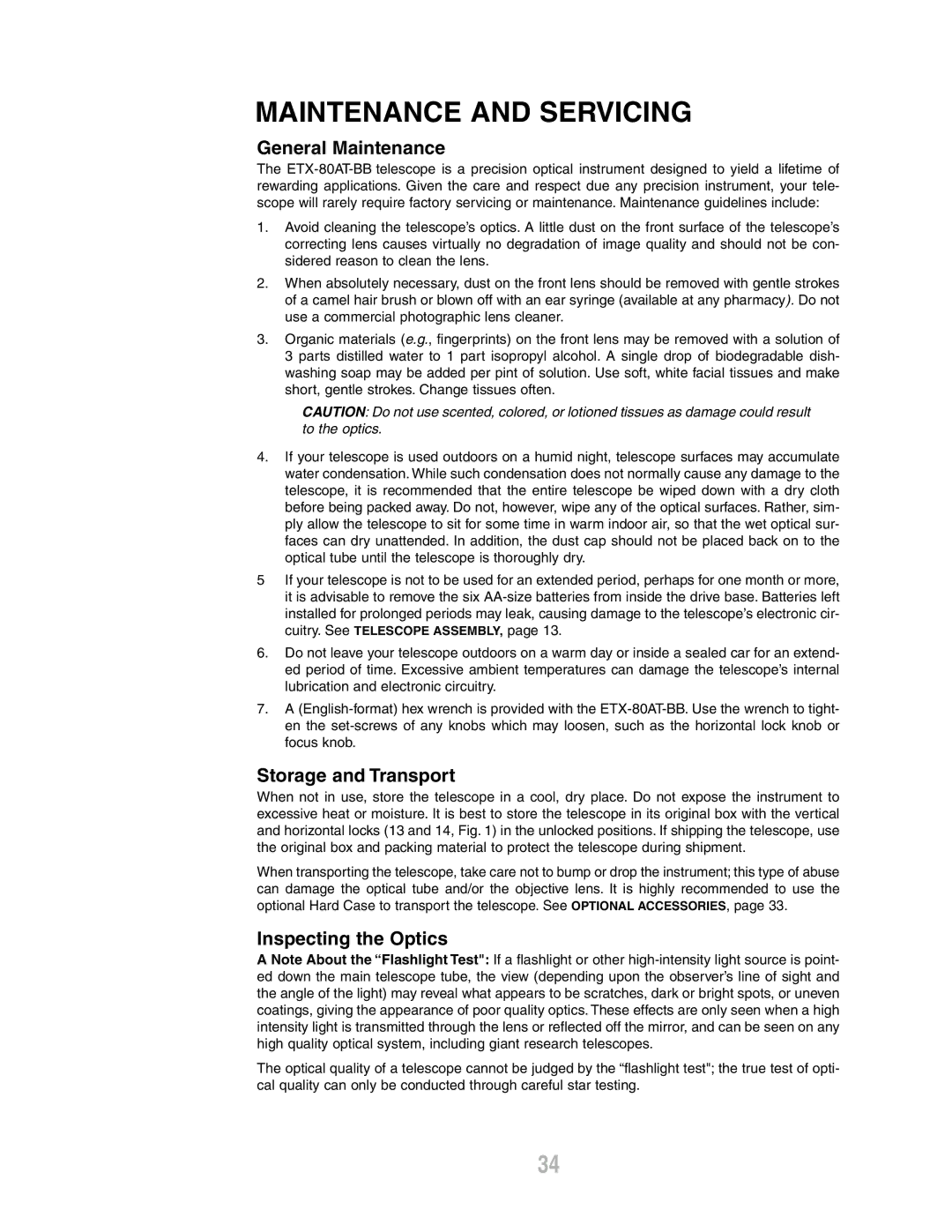MAINTENANCE AND SERVICING
General Maintenance
The
1.Avoid cleaning the telescope’s optics. A little dust on the front surface of the telescope’s correcting lens causes virtually no degradation of image quality and should not be con- sidered reason to clean the lens.
2.When absolutely necessary, dust on the front lens should be removed with gentle strokes of a camel hair brush or blown off with an ear syringe (available at any pharmacy). Do not use a commercial photographic lens cleaner.
3.Organic materials (e.g., fingerprints) on the front lens may be removed with a solution of 3 parts distilled water to 1 part isopropyl alcohol. A single drop of biodegradable dish- washing soap may be added per pint of solution. Use soft, white facial tissues and make short, gentle strokes. Change tissues often.
CAUTION: Do not use scented, colored, or lotioned tissues as damage could result to the optics.
4.If your telescope is used outdoors on a humid night, telescope surfaces may accumulate water condensation. While such condensation does not normally cause any damage to the telescope, it is recommended that the entire telescope be wiped down with a dry cloth before being packed away. Do not, however, wipe any of the optical surfaces. Rather, sim- ply allow the telescope to sit for some time in warm indoor air, so that the wet optical sur- faces can dry unattended. In addition, the dust cap should not be placed back on to the optical tube until the telescope is thoroughly dry.
5If your telescope is not to be used for an extended period, perhaps for one month or more, it is advisable to remove the six
6.Do not leave your telescope outdoors on a warm day or inside a sealed car for an extend- ed period of time. Excessive ambient temperatures can damage the telescope’s internal lubrication and electronic circuitry.
7.A
Storage and Transport
When not in use, store the telescope in a cool, dry place. Do not expose the instrument to excessive heat or moisture. It is best to store the telescope in its original box with the vertical and horizontal locks (13 and 14, Fig. 1) in the unlocked positions. If shipping the telescope, use the original box and packing material to protect the telescope during shipment.
When transporting the telescope, take care not to bump or drop the instrument; this type of abuse can damage the optical tube and/or the objective lens. It is highly recommended to use the optional Hard Case to transport the telescope. See OPTIONAL ACCESSORIES, page 33.
Inspecting the Optics
A Note About the “Flashlight Test": If a flashlight or other
The optical quality of a telescope cannot be judged by the “flashlight test"; the true test of opti- cal quality can only be conducted through careful star testing.
34
